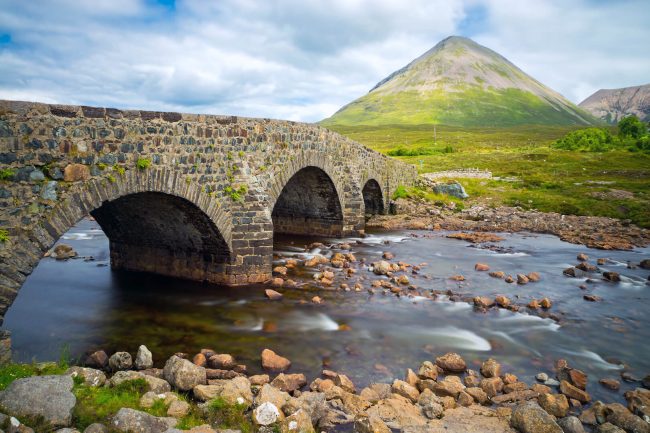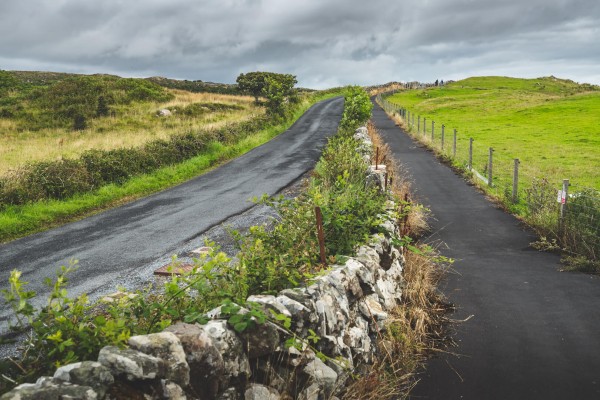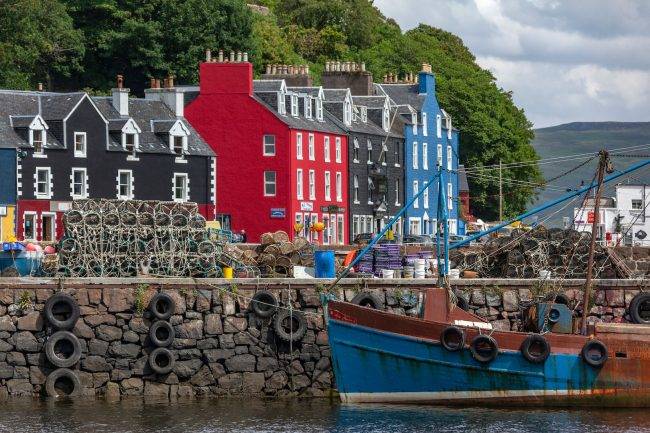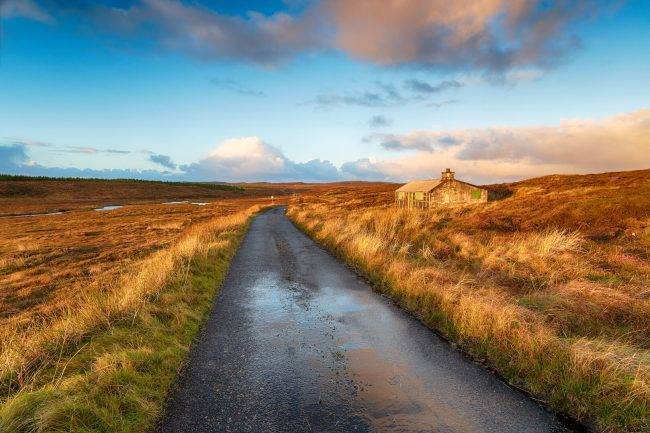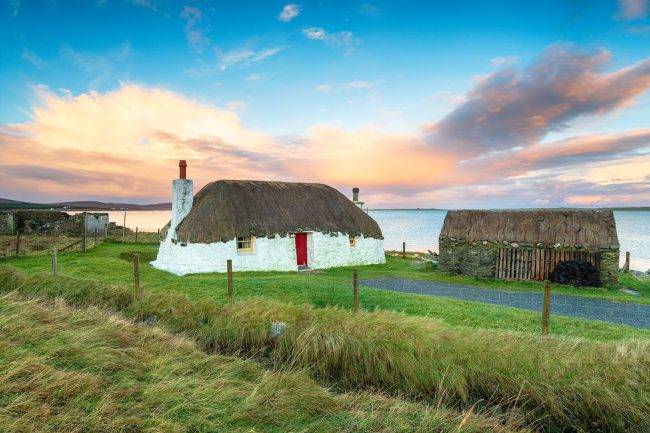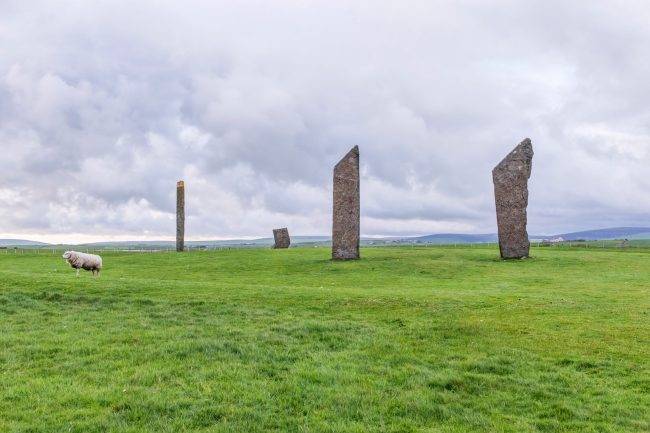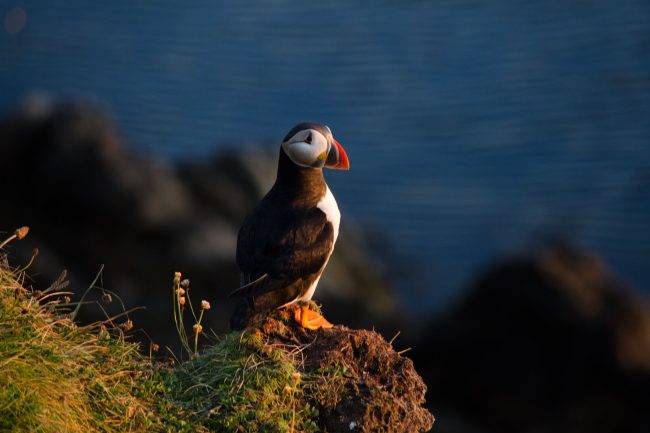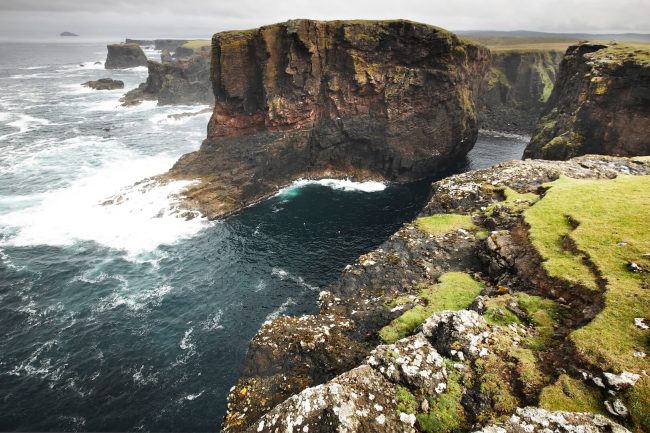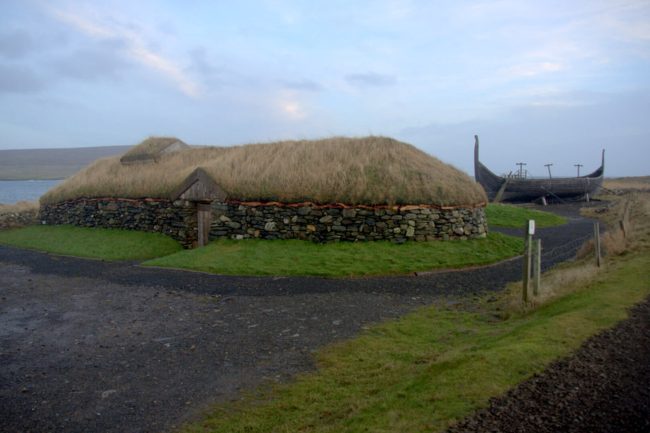A Guide to the Scottish Islands
The Scottish Islands
Scotland’s islands are a treasure trove of breathtaking landscapes, rich history, and unforgettable cultural experiences.
With over 800 islands scattered around its coast, Scotland boasts a diverse range of natural wonders, from the rugged mountain peaks of Skye to the pristine beaches of the Outer Hebrides.
In this Zoom Motorhome Hire guide, we will explore the major islands and uncover the highlights they offer, giving you all the inspiration you need to plan your next Scottish island adventure.
And while you’re with us, please check out our range of Motorhome and Campervan hire options in Scotland.
The Inner Hebrides
The Inner Hebrides is a group of islands off mainland Scotland’s western coast. Known for their stunning scenery and world-class whisky (see Islay below!), these islands have much to offer any traveller.
Isle of Skye
The Isle of Skye, often called the “Misty Isle,” is one of Scotland’s most famous and picturesque destinations. Visitors are drawn to its dramatic landscapes and iconic landmarks, such as the Cuillin mountain range, which dominates the skyline and offers some of Scotland’s most challenging and rewarding hikes.
The Black Cuillin is a must-see for serious mountaineers, while the Red Cuillin offers more accessible walks with equally impressive views. Another breathtaking landmark, the Old Man of Storr, is one of Skye’s most photographed attractions. The hike to its base takes you through stunning landscapes, offering panoramic views over the island.
The Fairy Pools, a series of crystal-clear pools connected by waterfalls, is a magical spot for a refreshing dip or a leisurely walk. Skye is also home to several award-winning restaurants serving the best local produce. Be sure to sample fresh seafood, local cheeses, and a wee dram of whisky from one of the island’s world-famous distilleries.
Islay
Islay, known as the “Queen of the Hebrides,” is world-renowned for its whisky production. Home to nine working distilleries, including Laphroaig, Ardbeg, and Bowmore, this island is a paradise for whisky enthusiasts.
In addition to its liquid gold, Islay offers fantastic birdwatching and wildlife experiences, with over 100 species calling the island home. Keep an eye out for golden eagles, choughs, and the thousands of migrating geese that visit each winter.
Visitors can also discover the rich history of Islay at sites such as the Kildalton Cross, Finlaggan (the ancient seat of the Lords of the Isles), and the numerous mediaeval castles scattered around the island.
Mull
Mull, the second-largest island of the Inner Hebrides, offers a wide range of attractions for visitors to enjoy. The island’s picturesque capital, Tobermory, is famous for its colourful waterfront buildings that house various shops, galleries, and eateries. Mull is also home to many wildlife, including golden eagles, otters, and deer. Boat trips are available to spot diverse marine life, such as whales, dolphins, and seals, offering visitors unforgettable experiences amid the island’s stunning natural beauty.
Other notable Inner Hebrides islands
Each island in the Inner Hebrides has its unique charm and attractions. Some other notable islands worth exploring include Iona, with its ancient abbey; Staffa, home to the awe-inspiring Fingal’s Cave; and the small but picturesque island of Eigg.
The Outer Hebrides
The Outer Hebrides, also known as the Western Isles, is a chain of islands off mainland Scotland’s northwest coast. These remote islands are famous for their untouched beauty, white sandy beaches, and strong Gaelic traditions.
Lewis and Harris
Lewis and Harris, the largest island in the Outer Hebrides, is a single landmass divided into two distinct regions. Lewis’s northern part is known for its unique moorland landscapes, while the southern part, Harris, boasts beautiful white sandy beaches.
The Callanish Standing Stones, dating back over 5,000 years, are one of Scotland’s most significant archaeological sites, offering a fascinating glimpse into the island’s ancient past. This rich history is also reflected in Harris, home to the world-famous Harris Tweed, a handwoven textile with a storied past. Visitors can explore this unique craft by visiting a working mill or a local weaver’s workshop.
The Outer Hebrides, including Lewis and Harris, are well-known for their strong Gaelic heritage. Immerse yourself in the island’s unique culture by visiting local museums, attending a ceilidh, or participating in a traditional music session.
Moreover, the beaches of Harris, such as Luskentyre and Scarista, rank among the most beautiful in the world, with pristine white sand and turquoise waters. The rugged coastline and dramatic sea cliffs that define the Outer Hebrides are not to be missed, offering breathtaking views and unforgettable experiences. The islands provide an incredible opportunity to explore the natural beauty, cultural richness, and remarkable landscapes that make up this enchanting part of Scotland.
North Uist and South Uist
Connected by a causeway, the two North and South Uist islands offer a captivating mix of stunning landscapes and rich history. The Uists are famous for their machair, a unique coastal habitat characterised by lush, flower-filled grasslands. Walking along the coast provides firsthand experiences of this remarkable landscape.
The islands also have numerous prehistoric sites, including chambered cairns, standing stones, and Iron Age forts. The well-preserved Neolithic site of Barpa Langass on North Uist is particularly noteworthy.
In addition to their historical significance, the Uists offer excellent outdoor activities and wildlife observation opportunities. Birdwatching enthusiasts will find numerous species inhabiting the islands’ lochs, moors, and coastlines.
The islands also boast excellent fishing, with many lochs stocked with wild brown trout. With their unparalleled natural beauty, cultural heritage, and abundant wildlife, the Uists are a must-visit destination for anyone exploring the Scottish islands.
Barra and Vatersay
The tranquil islands of Barra and Vatersay offer visitors a peaceful retreat and a taste of traditional island life. Barra’s unique airport is one of the most unusual in the world, featuring a runway that is a beach. Watching planes land and take off from the sands of Traigh Mhòr is an unforgettable experience.
Vatersay, on the other hand, boasts some of the most beautiful beaches in the Outer Hebrides, characterised by crystal-clear waters and powdery sand. Beaches such as Bagh a’ Deas and Bagh Bhatarsaigh provide a true island paradise.
The islands of Barra and Vatersay also offer visitors a warm welcome and a glimpse of traditional island life. One way to immerse yourself in the local culture is by sampling the delicious local seafood, such as fresh crab and lobster, at one of the island’s restaurants or cafes. In this serene and picturesque setting, travellers can experience the essence of the Scottish islands, where the simple pleasures of life and natural beauty take centre stage.
The Orkney Islands
Located off the northern coast of mainland Scotland, the Orkney Islands are an archipelago rich in ancient history and natural beauty. Orkney has plenty to offer, from the globally-important archaeological sites to stunning coastal landscapes.
Mainland Orkney
Mainland Orkney, the largest island in the Orkney archipelago, is home to most of the population and numerous attractions. The UNESCO World Heritage Site known as the Heart of Neolithic Orkney encompasses Skara Brae, a 5,000-year-old village, the Ring of Brodgar, the Stones of Stenness, and Maeshowe, a chambered tomb.
These sites offer incredible insight into the lives of the ancient people who once inhabited the islands. The capital of Orkney, Kirkwall, is a charming town with narrow streets and historic buildings. The red sandstone St. Magnus Cathedral, founded in 1137, is a must-see, as well as the nearby Bishop’s and Earl’s Palaces.
Scapa Flow, a natural harbour that played a crucial role in both World Wars, is another significant site. Visitors can learn about its history and the naval wrecks beneath its waters at the Scapa Flow Visitor Centre.
Smaller Orkney islands
Orkney’s smaller islands offer unique landscapes, history, and wildlife worth exploring. Hoy, the second-largest island in Orkney, is home to the iconic sea stack, the Old Man of Hoy, and boasts dramatic cliffs and moorland that serve as a haven for wildlife, including rare birds and red-throated divers.
Westray, known for its thriving puffin colonies, can be seen at Noup Head and Castle o’ Burrian and also features charming villages, ancient ruins, and stunning beaches.
North Ronaldsay, famous for its unique seaweed-eating sheep found nowhere else in the world, invites visitors to witness these rare animals and learn about their fascinating history and local conservation efforts, all while experiencing the islands’ captivating natural beauty.
Outdoor activities and wildlife
The Orkney Islands offer numerous opportunities for outdoor enthusiasts, from hiking and cycling to birdwatching and marine wildlife spotting.
Boat trips are available to explore the coastline and see the abundant marine life, including seals, dolphins, and even orcas, during certain times of the year.
The Shetland Islands
Located further north of the Scottish mainland, the Shetland Islands are a collection of over 100 islands known for their rugged beauty, unique wildlife, and strong Viking heritage.
Mainland Shetland
Mainland Shetland is the largest island in the archipelago and offers a variety of attractions:
- Lerwick and its Viking heritage: The capital of Shetland, Lerwick, boasts a rich history dating back to the Viking Age. Explore the historic old town, visit the Shetland Museum and Archives, and attend the annual Up Helly Aa festival to witness a traditional Viking fire festival.
- Mousa Broch and other ancient sites: Shetland is home to numerous archaeological sites, including Mousa Broch, a remarkably well-preserved Iron Age tower. Other notable sites include Jarlshof, which reveals layers of history from the Bronze Age to the Viking Age, and Old Scatness, an Iron Age village.
- Scenic coastline and beaches: Mainland Shetland boasts dramatic cliffs, stunning sea caves, and beautiful beaches. Visit Eshaness Cliffs, St. Ninian’s Isle, and Sumburgh Head to experience the best of Shetland’s coastal landscapes.
Smaller Shetland islands
The smaller Shetland islands offer unique experiences that are well worth exploring. Unst, the northernmost inhabited island in the UK, is home to the Viking Unst Project, which includes a reconstructed longhouse and a replica Viking ship and offers excellent birdwatching opportunities and picturesque landscapes.
Renowned for its birdlife, Fair Isle is a haven for birdwatchers, featuring observatory and warden-guided walks. It is also known for its traditional knitwear with distinctive patterns and colours. Shetland’s unique location makes it a wildlife hotspot, hosting more than one million nesting seabirds, such as puffins, guillemots, and gannets, along the coastlines, and seals and otters as well.
Additionally, Shetland hosts a variety of cultural events throughout the year, including the world-famous Up Helly Aa fire festival, the Shetland Folk Festival, and the Shetland Wool Week, celebrating the islands’ rich textile heritage.
Practical information for visiting the Scottish Islands
Transportation options:
- Ferries: Regular ferry services connect the Scottish mainland with the islands. Companies such as Caledonian MacBrayne and NorthLink Ferries provide routes to the Inner and Outer Hebrides, Orkney, and Shetland.
- Flights: Regional airports in the Scottish islands are served by airlines such as Loganair, offering flights from major Scottish cities and, in some cases, from other parts of the UK.
Accommodation choices
- Hotels: A variety of hotels, ranging from luxury to budget options, can be found on the larger islands.
- Guesthouses and B&Bs provide a more personal experience, often including a traditional Scottish breakfast.
- Self-catering options: Renting a cottage, apartment, or even a lighthouse offers the flexibility and privacy of a home away from home.
- Motorhome: Of course, we’re biassed, but our favourite way to explore the islands of Scotland is with the comfort of a motorhome. Almost all the ferry providers welcome motorhomes on board, so once you’ve checked your ferry times, you’re ready to go. Give Zoom’s luxury motorhome hire a go!
Best times to visit
The Scottish islands can be visited year-round, but the best weather and most daylight hours are typically between May and August. During this time, you’ll have a higher chance of experiencing the islands’ beautiful landscapes and wildlife in more pleasant conditions.
Spring and early summer are also excellent for birdwatching, as many species nest during this period. Be aware that the peak season (July and August) can be busier, so booking accommodations and transportation in advance is recommended.
Packing essentials
- Weather-appropriate clothing: The weather in the Scottish islands can be unpredictable, so pack layers, waterproof jackets, and sturdy walking shoes for outdoor activities.
- Sun protection: Even though Scotland may not be known for its sunny weather, sunburn can still be a risk during summer. Pack sunscreen, sunglasses, and a hat to protect yourself from the sun.
- Insect repellent: Midges can be an issue during the summer in some areas, particularly the west coast and the Hebrides. Bring insect repellent and consider a head net if you plan to spend extended periods outdoors.
- Binoculars and camera: To make the most of your wildlife-watching experiences, pack a good pair of binoculars and a camera to capture those unforgettable moments.
The Scottish islands offer a unique and diverse range of experiences, from their breathtaking landscapes and rich history to their vibrant local cultures. Whether you’re exploring the dramatic mountain peaks of Skye, delving into the Neolithic past of Orkney, or discovering the strong Viking heritage of Shetland, there’s something for everyone in these magical islands.
With careful planning and an adventurous spirit, you’re sure to create lasting memories on your Scottish island adventure!
If you have any questions, please get in touch.

